Ayurveda is an ancient holistic system of medicine and natural healing from India, and is the oldest known form of healthcare in the world.
We can find historical evidence of Ayurveda in the ancient books of wisdom known as the Vedas, written over 6,000 years ago, of which only a small portion is available to us from that time.1
Tibetan medicine and traditional Chinese medicine both have their roots in Ayurveda. Early Greek medicine also embraced many concepts originally described in the classical Ayurvedic medical texts. Ayurveda has been used and practiced throughout the subcontinent, Indonesia and many other countries in the surrounding region for thousands of years, although it was often suppressed during various occupations in those areas.
Recently the western world, particularly Europe and the United States, has become increasingly fascinated with and interested in Ayurvedic medicine.
The Science of Life
The world Ayurveda roughly translates as “The Science of Life.” It is merger of two Sanskrit words: ‘Ayu’ (the root of ayur & ayus ) which means ‘life,’ and ‘Veda’ which means a combination of ‘science, knowledge and wisdom.’
According to Ayurveda, first noted by the ancient Ayurvedic scholar Charaka: human life is the combination of mind, body, senses and soul.
Ayurveda sees that the senses and the mind work in conjunction with one another and greatly influence our physiology.
Ayurveda is not just a medical system. It sees human beings as an integral part of nature. It believes that human beings should live in harmony with nature just as the animals and plants do, and utilize the laws of nature to create health and balance within. It adheres to this focus in guiding human beings to maintain health by using the inherent principles of nature to bring an individual back into equilibrium with his or her true self.
The ancient texts reveal that Ayurveda was also originally used as a regime to remove obstacles on one’s path to Self-Realization. At some point the medical aspects began to take priority over the spiritual forms of healing.
Today, these spiritual aspects of Ayurveda have taken a back seat to the medical focus. As Ayurveda becomes more commercially viable, the spiritual aspects may continue to lose ground. Yet there are a growing number of practitioners who employ these spiritual therapies and find better results than limiting their approach only to the medical, physical realm.
Understanding Ayurveda
Ayurvedic wisdom offers life-enhancing practices as well as
herbal medicinal preparations for the health and well being of the whole human being: body, mind, and soul. It is much more than just a system to treat symptoms or physical illness.
Ayurveda describes three fundamental energies that govern our health and well being, and are seen both in our internal and external environments. Called ‘doshas’ these three energies are known as:
- • Vata (Air/Wind)
- • Pitta (Fire/Sun)
- • Kapha (Earth & Water)
Ayurveda sees these primary forces in a unique combination in every individual, and as relating to the characteristics of our mind and body. Every individual has a unique proportion of these three forces that shapes our nature.
These doshas also have the characteristic of being: movement (Vata), transformation (Pitta) and structure (Kapha). We are all made up of unique proportions of Vata, Pitta and Kapha. The ratios of the doshas vary in each individual. Because of this, Ayurveda sees each person as a special mixture that accounts for our diversity.
Ayurveda gives us a model to look at each individual as a unique makeup of the three doshas (and sub-doshas), and thereby design treatment protocols that specifically address a person’s health challenges.
Herbs are often recommended to supplement the nutritional requirements on a regular basis to build and maintain a healthy physiology. As some of the Ayurvedic herbs are now recognized to be the most potent and powerful adaptogens on the planet — and since stress is now known to be a significant factor in over 80 percent of all illnesses — these herbs are essential in any health program designed to promote and maintain a healthy human body.
When any of the doshas become aggravated, thereby upsetting the natural harmony for the individual, Ayurveda suggests specific lifestyle and nutritional guidelines as well as specific medicinal herbs to assist the individual in reducing and rebalancing the dosha that has become excessive or out of balance.
Ayurveda goes into great detail to describe the medicinal attributes of many herbs and their correct usage to compliment and hasten the healing process, and to strengthen the body’s organs and systems.
Ayurvedic Herbs: Controversy Over Pharma Attempts at Patents
Growing awareness in the west of the efficacy of Ayurvedic herbs and formulations has led to controversy and battles with the western pharmaceutical companies trying to patent these herbs.3
Only recently discovered in the west, Ayurvedic herbs such as Neem, Ashwagandha, Tulsi, Shatavari, Turmeric, Amalaki and Brahmi as well as traditional preparations such as Triphala and Trikatu have long been known to have significant medicinal value without adverse side effects.
Several pharmaceutical companies and academic institutions in the west have come into conflict with Indian academic institutions and traditional Ayurvedic practitioners over the intellectual property rights of herbal products researched by the western agencies.
The Ayurvedic practitioners have known about the efficacy of such products for centuries, and so contend that they carry precedence with regards to patent rights on such products.
Free Trade Industrial Agriculture Rules Threaten the World’s Farmers
Per the World Trade Organization Trade Related Intellectual Property Rights Agreement:4
“Indian farmers, traditional practitioners, and traders will lose their market share in local, national and global markets. For example, recently the U.S. government granted a patent for the anti-diabetic properties of karela, jamun, and brinjal to two non-resident Indians, Onkar S.Tomer and Kripanath Borah, and their colleague Peter Gloniski. Yet the use of these substances for control of diabetes is everyday knowledge and practice in India. Their medical use is documented in authoritative treatises such as Wealth of India, the Compendium of Indian Medicinal Plants and the Treatise on Indian Medicinal Plants.
If there were only one or two cases of such false claims to invention on the basis of biopiracy, they could be called an error. However, biopiracy is an epidemic.
Neem, haldi, pepper, harar, bahera, amla, mustard, basmati, ginger, castor, jaramla, amaltas and new karela and jamun have all been patented. The problem is not, as was made out to be in the case of turmeric, an error made by a patent clerk. The problem is deep and systemic. And it calls for a systemic change, not case-by-case challenges. The potential costs of biopiracy to the Third World poor are very high since two-thirds of the people in the South depend on free access to biodiversity for their livelihoods and needs. Seventy percent of seed in India is saved or shared farmers’ seed; 70 percent of healing is based on indigenous medicine using local plants.”
Obtaining Potent, Efficacious, Organic (Heavy-Metal Free) Ayurvedic Herbs
It has been mostly individual practitioners who procure, grow, dry and prepare these herbs and preparations in an effective, potent manner, whereas commercially available Ayurvedic products have been of substandard quality.
It is only recently that a few companies have started producing high quality organic Ayurvedic herbal products, most notably, ORGANIC INDIA Pvt. Ltd. Headquartered in Lucknow, UP. North India.
Ayurveda Moving West
Clinical practice, research and education in Ayurvedic medicine remain the most authentic in India. However, attempts are being made by westerners to export the essence of Ayurveda to complement their own medical systems, where the pharmaceutical industry and allopathic medicine predominates.
As a result of regulations in medical practice in Europe and America, the most commonly practiced Ayurvedic treatments in the west are massage, dietary counseling and herbal advice.
The NAMA (National Ayurvedic Medical Association-USA) is one of several groups seeking to set standards for Ayurveda in the west.
There are 26 schools in the US and dozens in Europe which are teaching 500+ hour courses for proficiency at Ayurvedic Health Practitioners, certified but not licensed.
In the United States, the NIH NCCAM expends some of its $123 million budget on Ayurvedic medicine research. In addition, the National Institute of Ayurvedic Medicine, established by Dr. Scott Gerson, is an example of a research institute that has carried out research into Ayurvedic practices.
Dr. Gerson has published part of his work on the antifungal activities of certain Ayurvedic plants in medical journals. Other notable researchers on ayurveda in the West include Dr. Bala Manyam, the Maharishi Ayurveda group in Fairfield, Iowa, and Dr. Mano Venkatraman at the University of Washington, Seattle.
Ayurveda is a Recognized Medicine
Ayurvedic practitioners are regularly appointed as an “Honorary Ayurvedic Physician” to the President of India. Every year on the occasion of Dhanvantari Jayanti, a prestigious Dhanvantari Award is conferred on a famous personality of medicine, including a doctor of Ayurveda.
Ayurveda is a statutory, recognized medical system of health care like other medical systems existing in India. Ayurvedic medicines have to be approved, registered and licensed by the Central Council of Indian Medicine (CCIM), which governs and recommends policies for the research and development of the system.
In India, practitioners in Ayurveda undergo five and a half years of training, including one year of internship in select Ayurveda medical schools, where they earn the professional doctorate degree of Bachelor of Ayurvedic Medicine and Surgery.





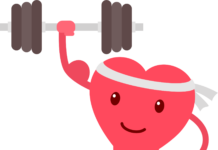
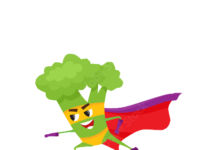

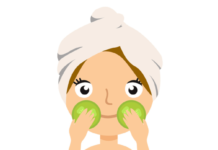









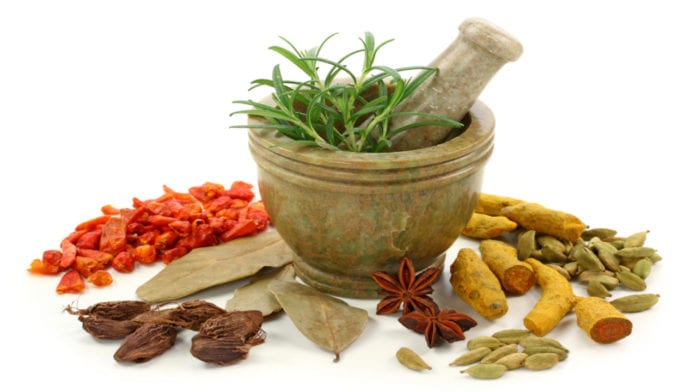







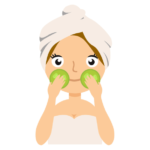

Thanks and a nice informative article. Many cultures for thousands of years have understood that foods can be used as a healing system. Something our modern society is beginning to awaken with all the health issues people are beginning to experience with stress, illnesses and diseases. An accumulation of processed foods, chemicals and pollution in our air, water, foods, etc. Lets hope what our ancestors have been doing for a long time will finally be realized and recognized today.
Janet M
Footsteps Reflexology
I totally agree Janet. Humans are putting destruction upon our own planet limiting and destroying our resources by doing many things. Ultimately, the whole society will have to make a change now in order to pave a bright future for our next generation.
In Health,
Watzup Today
Im a dietician and people are relying too much on medication. Its ridiculous how mainstream media, corporations are influencing our society. Dont get me wrong and there are cases where some people need their medication but what it comes down to is being proactive and living a healthy lifestyle before the issues arise. As well, looking at the root issue and not resolving our problems with medication to only fix or relieve the symptoms. Thanks for the article!
Lisa
Hi Lisa,
I also wanted to add that in some cases its great our technology can help us move forward if its done properly within balance of our society, earths resources, etc. On a positive note, it can allow people to connect on the internet with other liked-minded people and groups. Its a great way to keep up to date with new information since some of us may not be aware of how corporations and media are working together to only benefit their self-interest in profits rather than the concern of people. A lot of misinformation is being used in influencing our society around the world. The tool of the internet can be a huge benefit if it is used within proper moderation so we can spread our correct and positive message to others.
I couldn’t agree with you more about the root issues and symptoms. Thanks for your input.
In Health,
Watzup Today